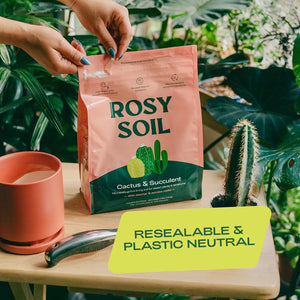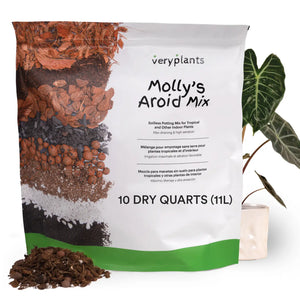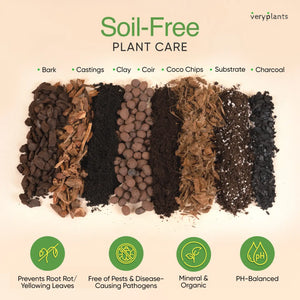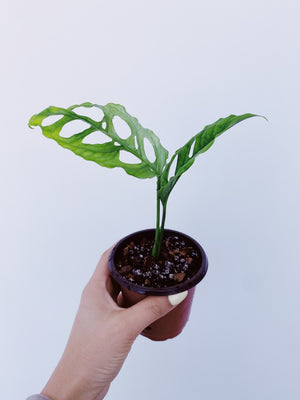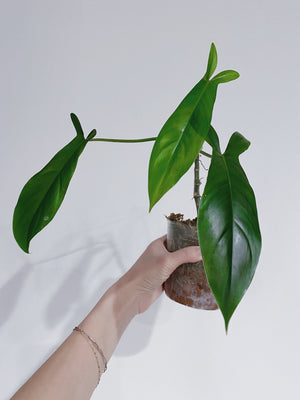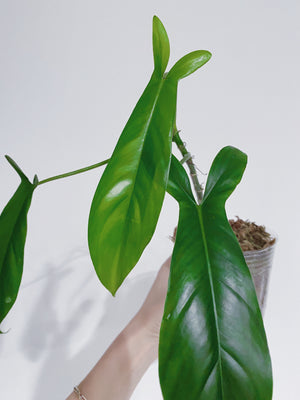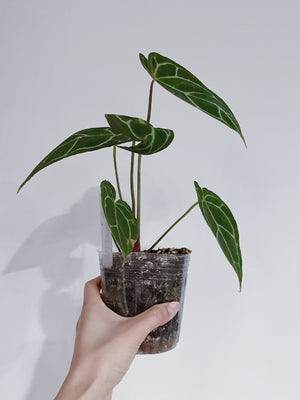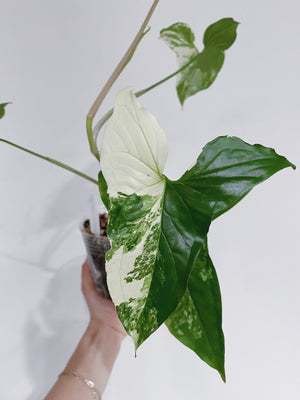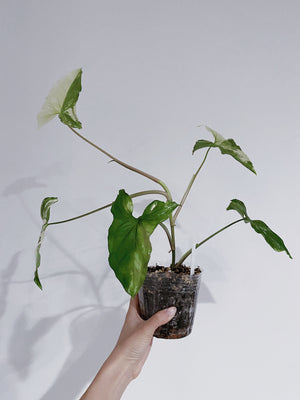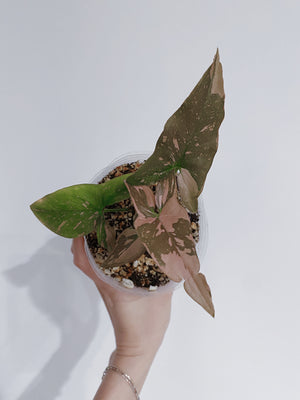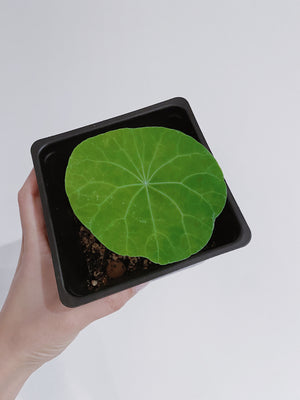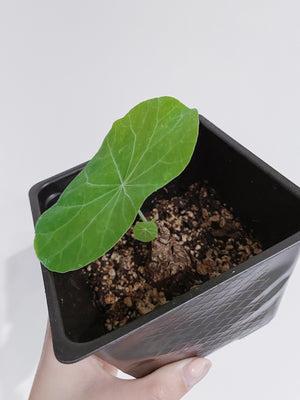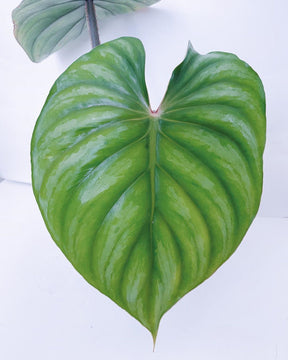Monstera Adansonii Care Guide - Tips for Optimal Growth
 Monstera adansonii: Source
Monstera adansonii: Source
Monstera adansonii, aka the “swiss cheese plant vine” or “monkey mask plant,” is one of the 41 species of holey leaved Monsteras out there. It’s the cute little cousin of the big, shiny leaved and well-known Monstera deliciosa.
Adansonii is a perfect desk or shelf plant with small leaves, often mottled with around 5 large holes, and a vine habit that cascades beautifully or climbs like a monkey.
Monstera Adansonii vs. Obliqua
The two are often confused! The Obliqua, however, is a super rare variety that has thinner leaves and bigger holes. It's a lot more hole than leaf, compared to the Adansonii.
How to Grow and Care for Monstera adansonii
Welcome to the jungle! Adansonii is a pretty easy plant baby to care for, and if you keep the warm, humid and moist jungle vibes of it’s origin in mind, it will thrive. In the right conditions it can grow up to 10-20 meters, filling your space with bright green, fashionable foliage.
Light:
Since this plant likes to climb jungle trees, it prefers filtered sunlight. Keep it on a shelf or desk, or near an east or west facing window.
Temperature and Humidity:
Bathrooms and kitchens are perfect rooms for Monstera adansonii; it loves temperatures above 60F and high humidity. You can mist your plant to increase humidity and help it grow faster and healthier as well!
Fertilizing:
Some potting soils have a slow-release fertilizer already mixed in so ask the nursery people if your plant’s soil does and if the repotting soil you are buying does. If not, fertilize regularly with a water soluble houseplant fertilizer monthly in the spring and summer.
Watering:
Watering can sometimes be the most intimidating part of caring for a plant. It doesn’t have to be! Feel the soil with your fingers. If the top layer is dry, water thoroughly.
Adansonii likes to be moist but not flooded. Overwatering doesn’t depend on how much water you give, but how often you water. Allow the soil to dry out a little before watering again.
Soil:
A peat based, well-drained soil with lots of white chunks of perlite will help keep Adansonii’s roots healthy. The pH should be around 5.5-7.5.
Potting and repotting:
Choose a pot with drainage holes, which allow any water the soil can’t hold to drain out. Re-pot every other year, or check the roots every year by carefully removing the pot. If the roots are circling the bottom of the root ball or growing out of the drainage holes it is time to give the plant some fresh soil.
Pruning:
Adansonii is a vine so you can provide it with support or let it trail and prune it as you like. Prune in the spring or fall, clipping off the top growth and any dead or ugly leaves.
Propagation:
One piece of the mama plant can turn into a whole new plant with just a few snips! Use pruned clippings or take cuttings to start new little clones to gift or enlarge your Adansonii family.
Remove the leaves from the bottom of the cutting and place into a glass or vase of water for 1-3 weeks until roots form. Once the white roots start to show place them carefully into loose moist soil.
Another method is to dip the end in rooting powder and place it directly into some moist soil for a couple weeks. Don’t pull the cutting to check if it has roots; when new leaves appear you’ll know it does!
Cover the cuttings with a bag to optimize humidity and keep them out of direct sunlight and in a warm location.
 Monstera adansonii: Source
Monstera adansonii: Source
Why is My Adansonii Plant Dying?
If your adansonii looks sick, become a sleuth and take a closer look.
Why are there no holes in the leaves?
No holes means your Adansonii plant is not getting enough light. Find an east or west facing window to place it nearby.
Are your Adansonii leaves turning yellow?
Check the soil. If it is quite wet hold off on watering until the soil has had time to dry out. Consider repotting with fresh soil and in a pot with a drainage hole, and make sure your plant is not starving. If your plant has been without fresh soil for a long time you might need to start fertilizing.
Do your Adansonii leaves have brown and crispy edges?
Always check the soil first. If it is very dry, water it. If it is too wet let it dry out before watering again.
Crispy leaves could also mean the humidity is too low. Try moving your plant to a more humid room or misting the leaves daily.
Brown leaf edges might mean it is too bright so try moving it to a more shady location. Keep in mind that brown edges won’t fix themselves so watch for new leaves which will indicate if the plant is healthier now or not.
Are there insects sucking on your Adansonii plant?
Pests aren’t super common for Adansonii, but if you do find bugs it might be scale insects or spider mites. These are very common houseplant pests.
Scale insects look like little scabs and come in several light colours. They have a waxy coating and don’t move quickly or at all. You can find them in plant crevices or on the undersides of leaves. If there are only a few you could peel them off, or use a cotton swab dipped in rubbing alcohol.
Spider mites are tiny crawlers that you might need magnifying glass to find. Often the first sign is stippling damage or very fine webbing. They prefer to live on leaf undersides, so focus on those areas with controls like neem oil or insecticidal soap.
Other Monstera adansonii Tips & Information
- Since it contains calcium oxalate crystals , the Adansonii is moderately toxic to cats and dogs, so keep them away from your pets!
- Adansonii, like most Monstera, are epiphytic plants, with aerial roots which help them stick to and climb things and absorb moisture from the air. These do not need to be trimmed, but you can use them to train it up where you want it.
- The Adansonii produces purple or cream colored calla-lily like flowers, but this is more common in the wild than at home.
Written by
Sylvia Dekker

